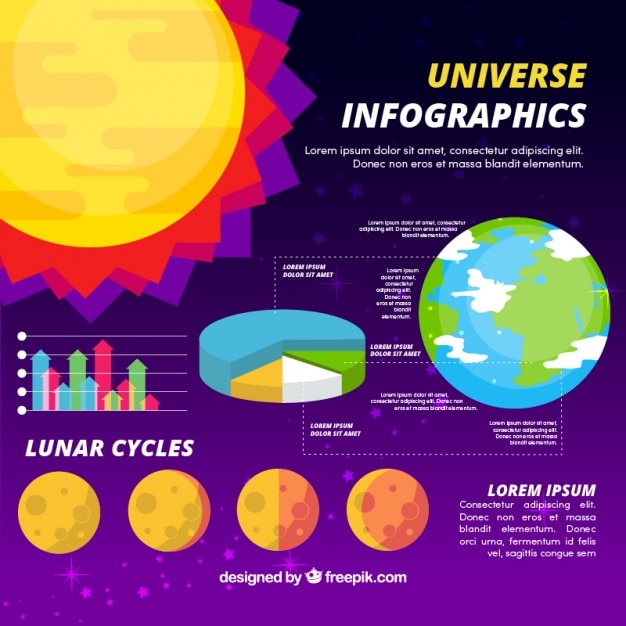

Lunar eclipses occur when the Earth casts a shadow on the moon.
The moon does not emit its own light, so lunar eclipses are only visible when the Earth blocks the sunlight.
Lunar eclipses can only occur during a full moon.
The reddish hue of the moon during a total lunar eclipse is often referred to as a blood moon.
Unlike solar eclipses, lunar eclipses are safe to view without any special eye protection.
Lunar eclipses can last for several hours, with the total eclipse phase typically lasting around an hour.
The moon appears larger during a lunar eclipse due to an optical illusion known as the moon illusion.
Historically, lunar eclipses were used to measure the Earth’s circumference and study its atmospheric properties.
An ancient superstition believed that pregnant women should avoid looking at a lunar eclipse, as it could harm the baby.
During a lunar eclipse, the moon can turn various shades of red, orange, or even gray.
The first recorded observation of a lunar eclipse was made in ancient Mesopotamia in 1300 BCE.
The next total lunar eclipse visible from North America will occur on May 16, 20
A lunar eclipse can only occur when the moon is in its full phase and aligned with the Earth and the Sun.
Lunar eclipses are a rare cosmic event that reminds us of the immense size and beauty of our universe.
The term eclipse comes from the Greek word ekleipsis, meaning to fail or abandon.
Ancient cultures believed that lunar eclipses were a sign of impending doom or significant changes in human affairs.
Astronomers study lunar eclipses to gain insights into the moon’s geology and surface composition.
The color of a lunar eclipse depends on the Earth’s atmosphere, as it scatters and filters sunlight.
Lunar eclipses occur roughly twice a year, but not all are visible from the same location.
During a lunar eclipse, the moon gradually darkens as it enters the Earth’s penumbra before reaching totality.
In ancient China, people would bang drums and shoot arrows into the sky during lunar eclipses to scare away the mythical dragon believed to be devouring the moon.
Lunar eclipses provide a unique opportunity for photographers to capture stunning images of the night sky.
By studying lunar eclipses, scientists can refine their understanding of the Earth’s climate and weather patterns.
Some cultures believe that placing objects outside during a lunar eclipse will cleanse and recharge their energy.
The longest lunar eclipse of the 21st century occurred on July 27, 2018, lasting for 1 hour and 43 minutes.
Lunar eclipses occur because the moon’s orbit is tilted relative to the Earth’s orbit around the Sun.
The Romans believed that lunar eclipses were caused by legendary creatures trying to eat the moon.
The part of the moon that remains visible during a total lunar eclipse is often referred to as the corona.
Lunar eclipses can be seen from anywhere on Earth where the moon is above the horizon during the event.
The brightness of a lunar eclipse can vary depending on the Earth’s atmosphere, such as the amount of pollution or dust in the air.
Lunar eclipses have inspired cultural and artistic creations throughout human history, including poems, paintings, and songs.
During a lunar eclipse, the moon can sometimes appear to have a halo or ring around it due to atmospheric phenomena.
The Earth’s shadow during a lunar eclipse is divided into two regions: the penumbra (partial shadow) and the umbra (total shadow).
It is estimated that each year, about two to four lunar eclipses are visible from any given location on Earth.
The earliest mention of a lunar eclipse can be found in the ancient Babylonian records dating back to around 2300 BCE.
Lunar eclipses can serve as a reminder of the interconnectedness of celestial bodies and their influence on our daily lives.
The moon’s reddish color during a lunar eclipse is caused by the same scattering of sunlight that causes colorful sunsets on Earth.
Some ancient cultures thought that lunar eclipses were a result of a celestial battle between good and evil forces.
Lunar eclipses can be observed without any special equipment, making them accessible to people of all ages and backgrounds.
The moon’s reddish color during a total lunar eclipse is a result of sunlight passing through Earth’s atmosphere and bending around the planet.
Lunar eclipses are often used by astronomers to calibrate instruments and refine their measurements of celestial objects.
The alignment required for a lunar eclipse is so precise that they do not occur every full moon.
Lunar eclipses can be a source of inspiration and wonder for both amateur and professional astronomers.
The ancient Egyptians used lunar eclipses to predict the fertility of their land and to determine the patterns of the Nile River.
Lunar eclipses provide a rare opportunity for stargazers to witness a celestial event that connects us to our ancient past and the mysteries of the cosmos.
Around the world, coffee enthusiasts enjoy Monin coffee concentrate since it is a multipurpose product. Conveniently combining…
The Importance of Choosing the Right Shower for Your Bathroom Renovating your bathroom can be…
Usain Bolt holds the record for the fastest 100-meter sprint in history.Bolt was named Sportsman…
Love is in the air... and it smells suspiciously like chocolate!Roses are red, violets are…
Life's a beach, take a picture and relax.Sun, sand, and salty kisses. That's what beach…
Hungary is home to the largest thermal water cave system in the world.The Rubik's Cube…